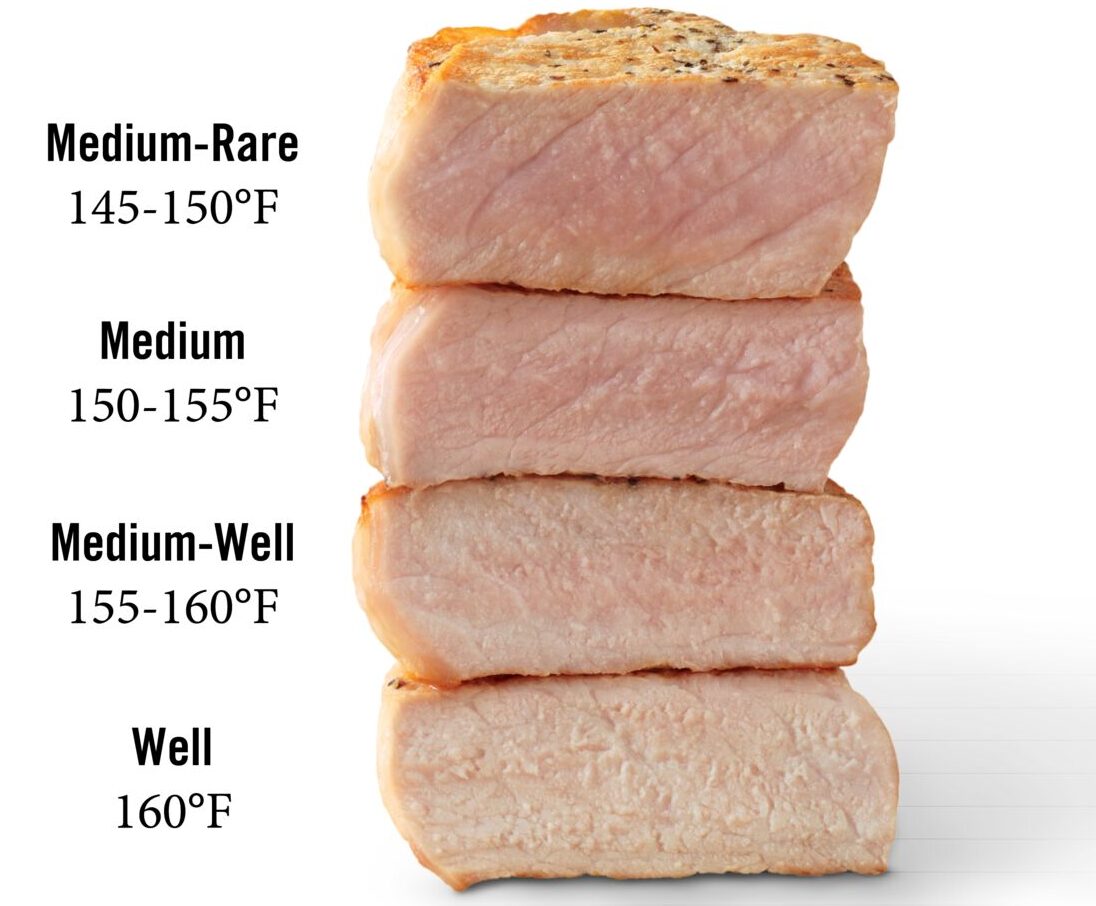Pork chops can make for a quick, delicious weeknight meal But to get the best results when cooking pork chops, it’s important to use the right temperature Too low and pork won’t cook through fully; too high and the chops can dry out. So what’s the ideal temperature range for cooking juicy, flavorful pork chops? Let’s find out.
Why Temperature Matters
Temperature is key when cooking pork properly to:
-
Ensure pork reaches safe internal temperatures. The FDA recommends cooking to at least 145°F.
-
Prevent overcooking Pork can dry out quickly if cooked above 160°F
-
Allow connective tissue to break down for tenderness Temperatures between 140-160°F relax tough fibers,
-
Bring fat to just the right heat to baste and tenderize meat.
-
Develop delicious caramelized exterior while keeping interior moist.
-
Enhance flavor compounds through Maillard reactions.
Mastering the right temperature for the given cut and cooking method helps pork chops reach that perfect combination of safety, moisture and flavor.
Best Temperature Range for Pork Chops
The ideal temperature for cooking pork chops is between 145-160°F, depending on thickness.
-
145-150°F is ideal for thin, boneless chops around 1/2 inch thick. This prevents them from overcooking while still reaching FDA safe minimums.
-
150-155°F is best for bone-in or thicker chops between 3/4 to 1 inch. The bone helps insulate the meat, so slightly higher temps ensure done-ness.
-
155-160°F is suitable for very thick chops from 1-2 inches. The low end of this range prevents toughness.
Always allow chops to rest 5 minutes after cooking – temperatures will rise another 5-10 degrees during this time.
Adjusting Temperatures by Cooking Method
The best temperature can vary depending on whether you pan-fry, bake or grill your pork chops.
Pan-frying: Use medium-high heat between 350-375°F. Thinner chops will need higher heat to brown and cook through. Thicker chops do better with lower heat to prevent burning the exterior before the interior cooks.
Baking: Bake at 325-350°F. The lower heat gently cooks chops while keeping them juicy. Higher heat of 375-400°F can be used for very thick chops to ensure doneness.
Grilling: Use direct medium heat between 450-500°F to sear chops on both sides. Move to indirect heat around 325°F to finish cooking more slowly.
Always rely on a meat thermometer for the most accurate doneness. Check temperature at the thickest part without touching bone.
Handy Thickness Guidelines
To determine the right target temperature, first consider the thickness of your chops:
- 1/2 inch or less – cook to around 145°F
- 3/4 to 1 inch thick – cook to 150-155°F
- 1 to 2 inches thick – aim for 155-160°F
Thinner chops cook quickly and need lower heat. Thicker chops require more time and moderately higher temperatures for tender, juicy centers.
Let Pork Rest Before Serving
Once pork chops are cooked, always allow them to rest at least 5 minutes before cutting and eating. This allows juices that have been forced to the center during cooking to redistribute back throughout the meat. Skipping this step means dry, flavorless pork.
To keep chops warm and allow juices to set during the rest, tent them loosely with foil and set aside before serving.
Cooking pork chops using the right techniques and temperature for thickness will result in juicy, succulent meat every time. For optimal flavor and moisture, target 145-160°F on an instant-read thermometer. And never forget to rest those chops once cooked!
:max_bytes(150000):strip_icc()/how-to-cook-pork-chops-995226_final-5b88636fc9e77c0050f92985.png)
Cooking Temperature of Pork
Finding the right temperature to cook pork is the last step in serving a juicy, tender piece of meat. Pork today is very lean, making it important to not overcook and follow the recommended pork cooking temperature. The safe internal pork cooking temperature for fresh cuts is 145° F. To check doneness properly, use a digital cooking thermometer.
Meats that have just been cut, like pork chops, pork roasts, pork loin, and tenderloin, should be 145° F to get the most flavor. Ground pork should always be cooked to 160° F. “Tender” means that some pork cuts are done, like small cuts that are hard to test with a thermometer or large cuts that cook slowly at low temperatures. “Fresh ham should be cooked to 145° F and then rested for 3 minutes. Fully cooked ham can be warmed up to 140° F or even eaten cold.”
If you follow these pork cooking temperature guidelines, you will not only be safe to eat, but your meat will also stay in good shape, giving you a juicy, tender, delicious meal.
The safe internal pork cooking temperature is 145° F followed by a 3-minute rest.

Cook Pork Chops to Perfection: The Ultimate Guide to Internal Temperature
FAQ
Is it better to bake pork chops at 350 or 400?
What is the best way to cook pork chops without them drying out?
Should pork chops be 145 or 165?
